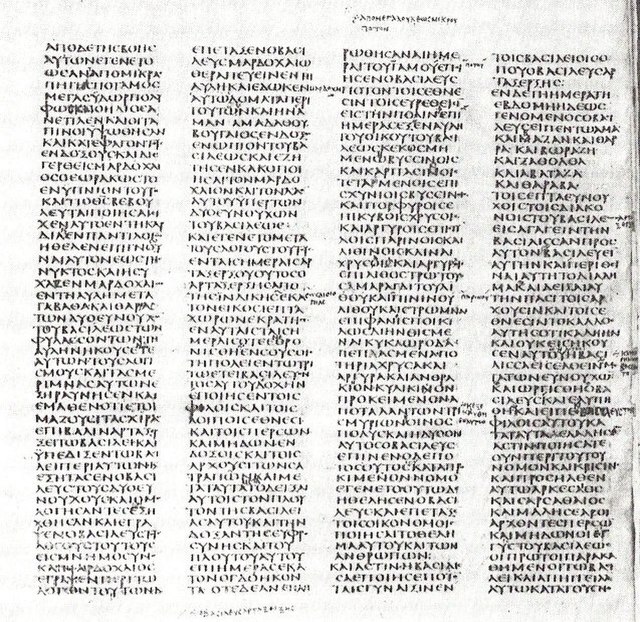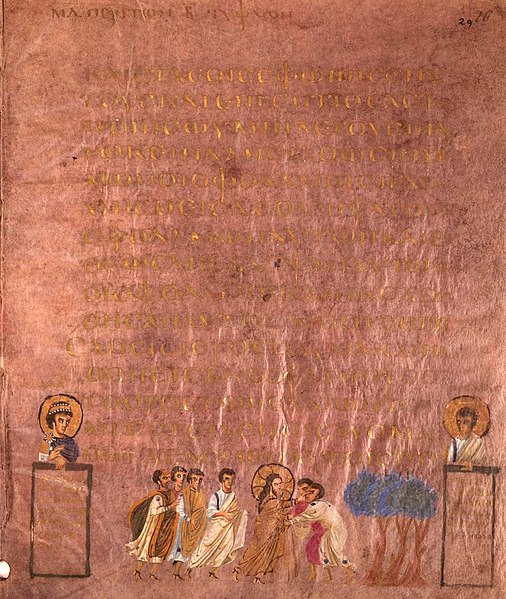The Codex Sinaiticus, designated by siglum א [Aleph] or 01, δ 2, also called Sinai Bible, is a fourth-century Christian manuscript of a Greek Bible, containing the majority of the Greek Old Testament, including the deuterocanonical books, and the Greek New Testament, with both the Epistle of Barnabas and the Shepherd of Hermas included. It is written in uncial letters on parchment. It is one of the four great uncial codices. Along with Codex Alexandrinus and Codex Vaticanus, it is one of the earliest and most complete manuscripts of the Bible, and contains the oldest complete copy of the New Testament. It is a historical treasure, and using the study of comparative writing styles (palaeography), it has been dated to the mid-fourth century.
Book of Esther
Luke 11:2 in Codex Sinaiticus
A portion of Codex Sinaiticus, containing Esther
John 7:52–8:12 without the pericope 7:53–8:11 in Sinaiticus
A biblical manuscript is any handwritten copy of a portion of the text of the Bible. Biblical manuscripts vary in size from tiny scrolls containing individual verses of the Jewish scriptures to huge polyglot codices containing both the Hebrew Bible (Tanakh) and the New Testament, as well as extracanonical works.
A page from the Aleppo Codex, Deuteronomy
Folio 41v from Codex Alexandrinus contains the Gospel of Luke with decorative tailpiece.
The beginning of the Gospel of Mark from the Book of Durrow
A page from the Sinope Gospels. The miniature at the bottom shows Jesus healing the blind.








